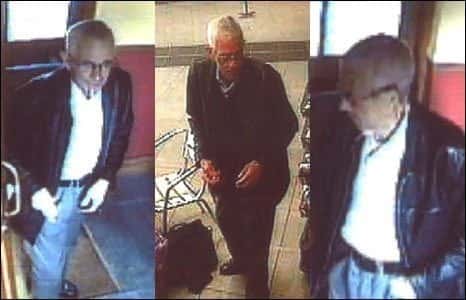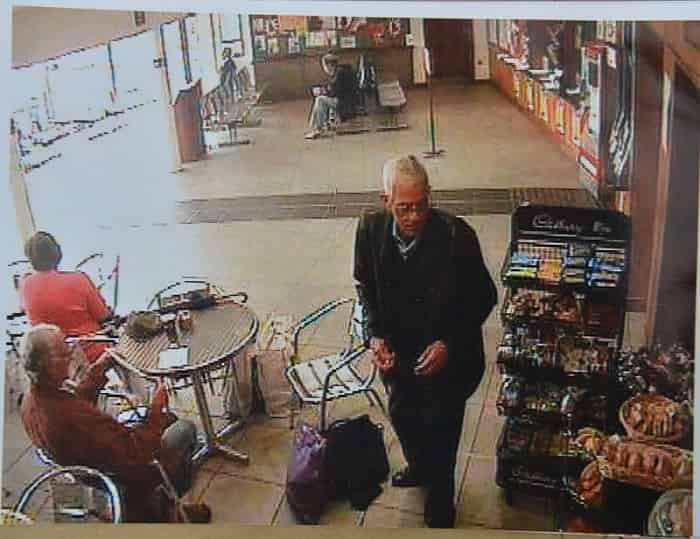The Mysterious Case of Peter Bergmann

On Friday, June 12, 2009, a man boarded a bus traveling from Derry/Londonderry in Northern Ireland to Sligo, Ireland. Carrying a black shoulder bag and a basic luggage bag, he looked like a regular tourist. He arrived in Sligo around 6:30 PM and took a taxi to a local hotel. At the hotel, he paid in cash for three nights and provided a name: Peter Bergmann. He also gave an address, “Ainstettersn 15, 4472, Vienna, Austria,” which would later turn out to be fake.
Hotel staff said the man appeared to be of Germanic descent, spoke English with a heavy German accent, and was a chain smoker. During his stay, he was seen stepping outside the hotel multiple times to smoke.
Mysterious Movements in Sligo
Throughout his three-night stay, Peter was captured on CCTV leaving the hotel at least 13 times. Each time, he carried a purple plastic bag filled with unknown items. However, he always returned without the bag. Investigators believe he was carefully disposing of his personal belongings around Sligo. Despite extensive searches, none of these items were ever found.

Authorities noted that Peter avoided being recorded by cameras in certain areas, suggesting he knew how to evade surveillance. His behavior was described as “methodical and precise.” A hotel worker once tried to clean his room but received no response after knocking. When they entered, Peter appeared startled and acted as though he had been caught doing something he shouldn’t.
Visits to the Post Office and the Beach
On Saturday, June 13, Peter went to the Sligo post office at 10:49 AM, where he purchased eight stamps and airmail stickers. It’s unclear who he planned to send mail to or if he ever did.
On Sunday, June 14, he left the hotel around 11 AM. He asked a taxi driver for advice on a good beach to visit for swimming. The driver suggested Rosses Point Beach and drove him there. Once they arrived, Peter stepped out, surveyed the area for a moment, and then returned to the taxi, appearing content.
A Change in Luggage and His Final Day
Peter checked out of the hotel on Monday, June 15, around 1 PM. He left with his black shoulder bag and purple plastic bag but carried a different luggage bag than the one he had when he arrived. What happened to his original bag remains a mystery.
He was seen walking toward the Quayside Shopping Centre, where he stood awkwardly in the doorway for several minutes. At around 1:16 PM, he headed to the bus station and ordered a ham and cheese toastie with a cappuccino. While eating, he repeatedly opened and closed a scrap of paper before tearing it up and throwing it in a bin. The paper was never recovered.
At 2:20 PM, Peter boarded a bus to Rosses Point Beach. Over the next eight hours, around 16–18 people saw him pacing the beach, looking restless and anxious. By 11:50 PM, he was last seen walking alone along the beach.
A Body on the Shore
The next morning, on June 16, Peter’s body was found on Rosses Point Beach by a father and son practicing for a triathlon. He was wearing purple Speedo swimming trunks with his underwear over them and a navy t-shirt tucked into the waistband. Some of his belongings were found nearby, but his black shoulder bag and purple plastic bag were missing.
The autopsy revealed that Peter had died from cardiac arrest, not drowning, even though his body had washed ashore. There were no signs of foul play. However, the autopsy uncovered something unexpected: Peter had advanced prostate cancer, bone tumors, and ischaemic heart disease. His conditions would have caused significant, constant pain, yet no painkillers or drugs were found in his system.
An Unsolved Mystery
Investigators worked for five months to uncover Peter’s identity. They quickly discovered that the name “Peter Bergmann” and the Austrian address he provided were fake. Searches across Europe, America, and other countries found no missing person matching his description.
No one has ever come forward to identify him or claim to know who he was. It’s also unclear how Peter arrived in Northern Ireland or where his journey began.
A Final Resting Place
Peter Bergmann was buried in an unmarked grave in Sligo. To this day, his true identity and the purpose of his journey remain unknown. His case continues to intrigue investigators, journalists, and the public, leaving behind one of Ireland’s most puzzling modern mysteries.
The question lingers: Who was Peter Bergmann, and what brought him to Sligo?
FAQs About the Case of Peter Bergmann
1. Who was Peter Bergmann?
Peter Bergmann is the alias of an unidentified man who traveled to Sligo, Ireland, in June 2009. His real name, identity, and background remain unknown.
2. Why is the case so mysterious?
The case is puzzling because “Peter Bergmann” provided a false name and address, carefully disposed of his belongings to avoid identification, and died under unusual circumstances. Despite investigations, no one has been able to determine who he was or why he came to Sligo.
3. What was found with Peter’s body?
Peter was found wearing purple Speedo swimming trunks, underwear over the trunks, and a navy t-shirt tucked in. Some of his belongings were discovered nearby, but his luggage and the mysterious purple plastic bag he carried were never recovered.
4. How did Peter Bergmann die?
The autopsy concluded that Peter died from cardiac arrest. He did not drown, despite being found on the shore. There were no signs of foul play.
5. Did Peter Bergmann have any health conditions?
Yes, the autopsy revealed that Peter had advanced prostate cancer, bone tumors, and ischaemic heart disease. These conditions would have caused significant pain, yet no painkillers or drugs were found in his system.
6. Why did Peter repeatedly carry a purple plastic bag?
Peter was seen on CCTV leaving his hotel with a purple plastic bag multiple times and returning without it. Authorities believe he was disposing of personal items around Sligo to prevent identification. None of these items were ever found.
7. Was the name Peter Bergmann real?
No, the name “Peter Bergmann” was fake. The Austrian address he provided at the hotel was also fabricated.
8. Did anyone recognize Peter Bergmann?
No one has ever come forward claiming to know Peter Bergmann. Searches across Europe, America, and other countries have yielded no matches for missing persons fitting his description.
9. Why did Peter visit the post office?
On June 13, Peter went to the Sligo post office and purchased eight stamps and airmail stickers. It’s unknown if he mailed anything or who the intended recipients might have been.
10. What was Peter doing on Rosses Point Beach?
Peter spent hours pacing the beach on June 15, 2009, appearing restless and anxious. He was last seen walking alone along the beach at 11:50 PM. His body was found there the next morning.
11. Where did Peter come from before arriving in Sligo?
Peter boarded a bus to Sligo from Derry/Londonderry, Northern Ireland. However, it’s unknown how he arrived in Northern Ireland or where his journey began.
12. Why didn’t investigators find his belongings?
Peter carefully disposed of his belongings during his stay in Sligo. He appeared to use blind spots in CCTV coverage to avoid detection, making it impossible for investigators to locate any of the discarded items.
13. Was there a note or explanation left behind?
At the bus station café, Peter was seen tearing up a piece of paper and throwing it in a bin. The paper was never recovered, leaving any potential clues lost.
14. Has Peter Bergmann’s identity ever been discovered?
No, Peter Bergmann’s true identity remains unknown. His case is one of Ireland’s most perplexing unsolved mysteries.
15. Where is Peter Bergmann buried?
Peter Bergmann was buried in an unmarked grave in Sligo, Ireland, after investigations failed to identify him or locate any family.
16. Why do people find this case so fascinating?
The case combines elements of mystery, meticulous planning, and unanswered questions. Peter Bergmann’s actions suggest he intended to erase his identity, leaving behind an enigma that continues to capture public interest.

